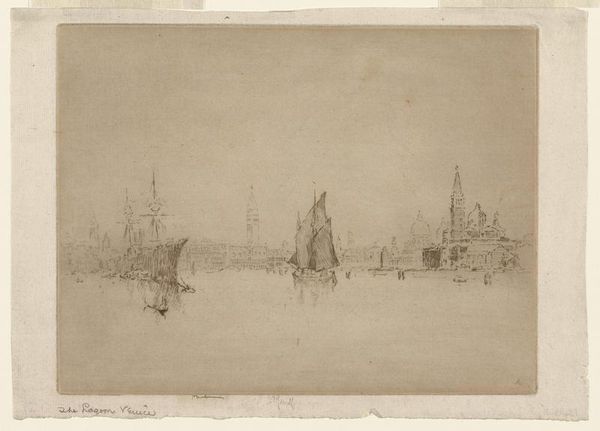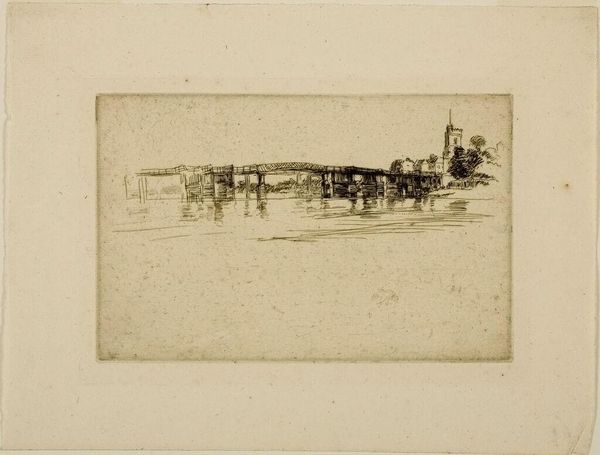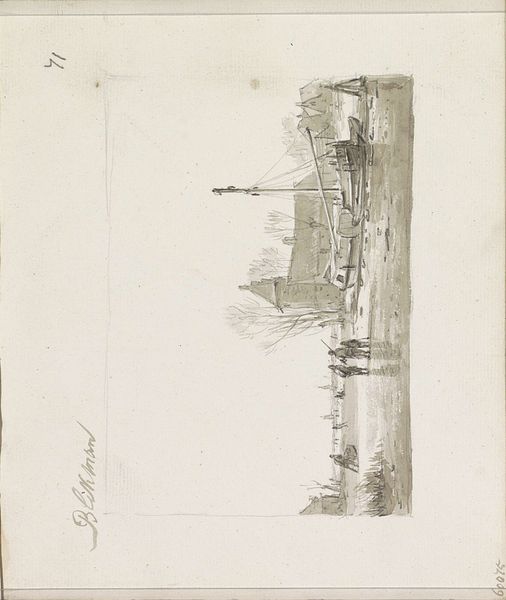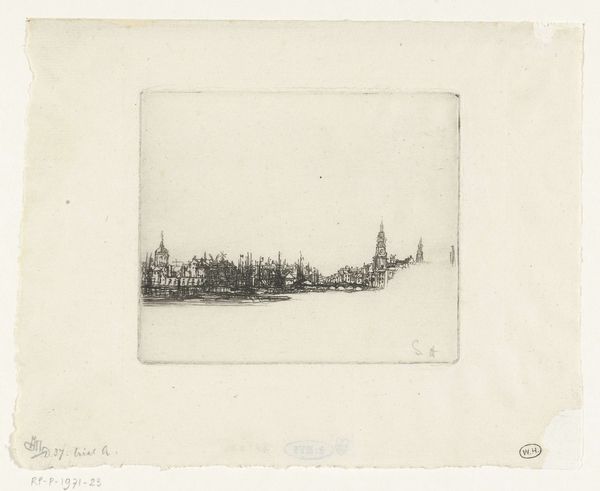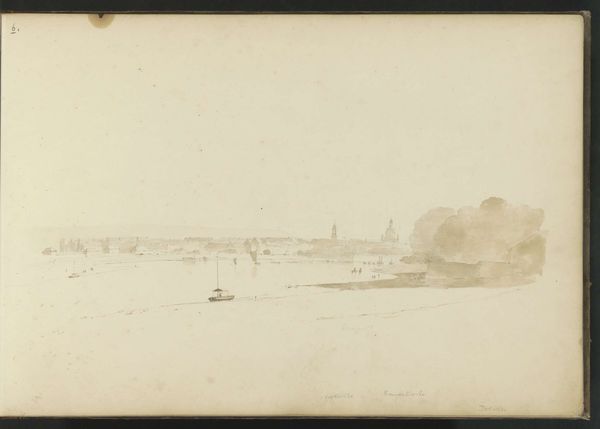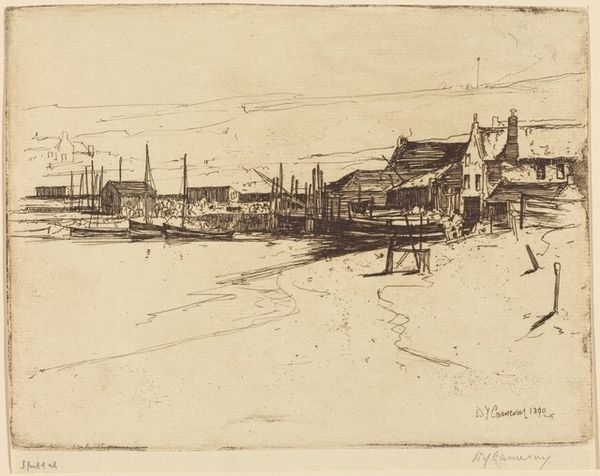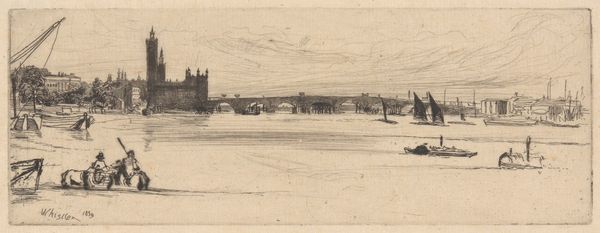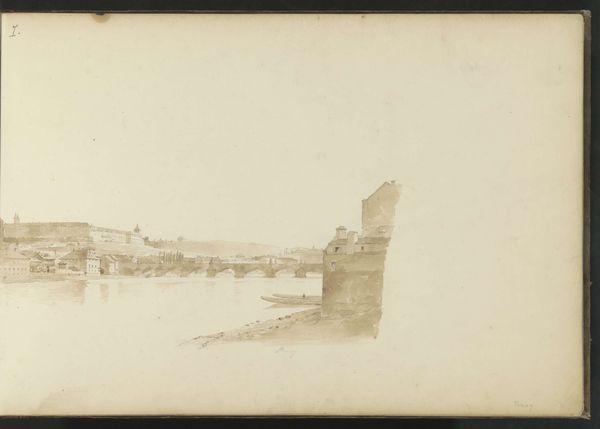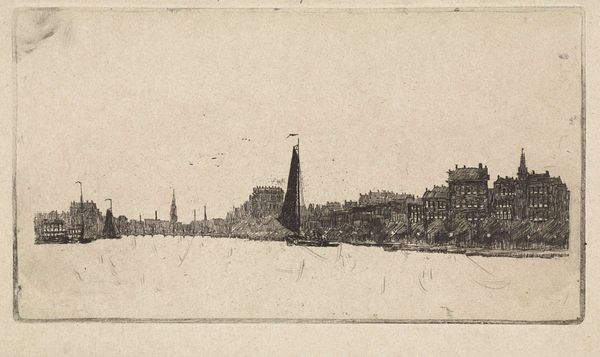
print, etching
# print
#
impressionism
#
etching
#
landscape
Dimensions: 2 15/16 x 5 1/2 in. (7.46 x 13.97 cm) (plate)6 9/16 x 7 7/8 in. (16.67 x 20 cm) (sheet)
Copyright: No Copyright - United States
Editor: This is Joseph Pennell's "Battersea Church," an etching from 1885. The sepia tones give it a feeling of nostalgia, and the scene of the Thames seems almost dreamlike. How would you interpret the work's overall effect? Curator: Pennell's choice of etching is key here. Look at the deliberate lines and the way the acid bites into the metal. This print is not just a pretty picture; it's about the industrial processes involved in its creation. Consider the working class labor involved in the actual production and distribution of the prints during that time. Editor: That's an interesting perspective! I hadn't really thought about the labour that went into making the etching itself, focusing instead on the church itself as the subject. Curator: Precisely! By highlighting Battersea Church, Pennell also presents a view of Victorian London defined by both industrial progress and religious conservatism. Note, however, the dominance of industrial material over the spiritual; it's down by the riverbank. Pennell also carefully employs his style to blur those social divisions through the image, thereby critiquing the very act of etching and its implications. What would that look like to you? Editor: It’s true, it does draw attention to the way labor and the process of image-making have impacts in other cultural sectors! Thank you! Curator: Exactly. Considering the conditions in which it was created, the print bridges both process and cultural values that defined art and society. It’s been a pleasure.
Comments
No comments
Be the first to comment and join the conversation on the ultimate creative platform.
